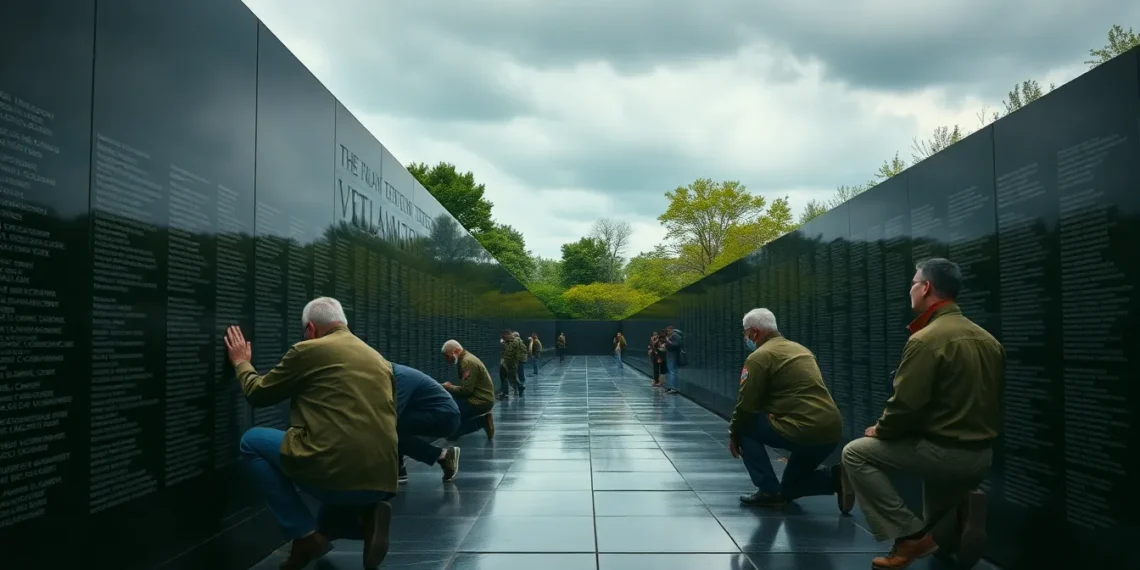The Vietnam War remains one of the most contentious chapters in American history, leaving a mark that still resonates today. As the conflict raged on, the question of loss weighed heavily on the nation. Just how many Americans paid the ultimate price in this tumultuous struggle? Spoiler alert: it’s a number that might surprise you.
While some might think of Vietnam as just another war in the history books, the human cost is staggering and often overlooked. The statistics tell a harrowing story of sacrifice, bravery, and tragedy. Delving into the figures reveals not only the scale of loss but also the profound impact on families and communities across the country. Get ready to uncover the truth behind the numbers and understand why they matter more than ever.
Overview of American Casualties in Vietnam
The Vietnam War resulted in significant casualties for the United States. Approximately 58,220 American military personnel died during the conflict from 1955 to 1975. This staggering number includes deaths from combat, accidents, and illness.
Among these casualties, combat-related deaths accounted for approximately 47,434 soldiers. Non-hostile deaths, which occurred due to accidents, suicides, or other reasons, contributed roughly 10,786 fatalities. The high casualty rate shocked many Americans and left lasting wounds on families across the nation.
In addition to fatalities, the Vietnam War produced around 153,303 wounded service members. Many of these individuals experienced long-term physical and psychological effects, impacting their quality of life. The Vietnam Veterans Memorial in Washington, D.C. honors the sacrifice of those who lost their lives.
Understanding these statistics emphasizes the profound impact of the war on American society. Each statistic reflects the personal tragedies faced by families and communities, underlining the importance of remembrance. The consequences of these casualties resonate today, shaping discussions about military engagement and veterans’ care in the U.S.
Factors Contributing to Casualties
The Vietnam War’s casualties stem from various critical factors.
Military Engagements
Conflict intensity played a significant role in the high casualty figures. Major battles, such as the Tet Offensive in 1968, resulted in substantial American losses, with thousands killed or injured within weeks. Combat strategies employed by the U.S. forces often led to fierce encounters with North Vietnamese troops. Ground operations and air campaigns, including bombing missions, escalated risks for military personnel. Additionally, the nature of guerrilla warfare complicated U.S. forces’ engagement tactics, leading to unpredictable and deadly confrontations. Increased troop deployment, peaking at over 500,000 personnel in 1969, further amplified exposure to danger.
Civilian Impact
Civilian casualties created devastating effects during the Vietnam War. An estimated two million Vietnamese civilians died as a direct result of the conflict, contributing to overall chaos and suffering. Areas subjected to heavy bombardment suffered enormous loss of life and displacement, affecting families and communities. The presence of U.S. troops heightened the risk for civilians, sometimes resulting in tragic misunderstandings during engagement strategies. Psychological trauma afflicted both civilians and American soldiers, creating lasting scars on those who survived. The consequential loss of life and emotional toll underscored the war’s profound impact on Vietnam, resonating with American values of life and liberty.
Statistical Breakdown
The Vietnam War’s human toll remains significant in American history. Casualty figures from 1955 to 1975 illustrate the profound losses incurred.
U.S. Military Personnel
Approximately 58,220 American military personnel died during the Vietnam War. Combat-related fatalities accounted for about 47,434, while non-hostile deaths contributed roughly 10,786. Those figures reflect a staggering loss, with many families grappling with the aftermath. The peak troop deployment of over 500,000 personnel in 1969 intensified exposure to combat, leading to these substantial casualties. Additionally, around 153,303 service members sustained injuries, creating ongoing challenges for veterans.
Other Related Losses
Losses extended beyond fatalities. An estimated two million Vietnamese civilians died as a result of the conflict. The extensive bombardments and military operations resulted in widespread destruction and displacement. Psychological trauma affected both civilians and soldiers alike, compounding the war’s impact. In the broader context, the Vietnam War reshaped American perceptions of military engagement and the psychological toll on service members. The Vietnam Veterans Memorial honors these sacrifices, reminding society of the war’s enduring consequences.
Historical Context
The Vietnam War holds a crucial place in American history due to its contentious nature and lasting consequences. This conflict, spanning from 1955 to 1975, claimed approximately 58,220 American lives.
Vietnam War Timeline
The escalation of U.S. involvement began in the late 1950s. The Gulf of Tonkin Resolution in 1964 marked a pivotal moment, leading to increased military engagement. Major combat operations commenced in 1965, peaking with over 500,000 troops deployed in 1969. The war saw significant turning points, including the Tet Offensive in 1968, which shocked American public opinion. By 1973, U.S. combat forces withdrew, yet the war continued until the fall of Saigon in 1975, resulting in profound impacts on military strategy and American society.
Major Battles and Their Casualties
Notable battles during the Vietnam War resulted in significant American casualties. The Battle of Khe Sanh in 1968 recorded about 200 U.S. deaths amidst intense fighting. The Tet Offensive led to approximately 1,100 American fatalities over its duration. The Battle of Hamburger Hill, occurring in May 1969, accounted for 72 U.S. soldiers killed. Other engagements, such as the Battle of Chum Duc, further illustrated the war’s high cost. Each confrontation added to the grim total of combat-related deaths and the long-lasting effects on veterans and their families.
The Sacrifices Made
The Vietnam War stands as a stark reminder of the sacrifices made by American service members. With over 58,000 lives lost the conflict left an indelible mark on families and communities across the nation. The staggering numbers reveal not just the human cost but also the profound implications for American society and military strategy. As the nation continues to reflect on this turbulent period the importance of honoring those who served remains paramount. The Vietnam Veterans Memorial serves as a powerful symbol of remembrance and recognition for the sacrifices made during this challenging chapter in history. Understanding these losses is crucial for fostering discussions around military engagement and supporting veterans today.







